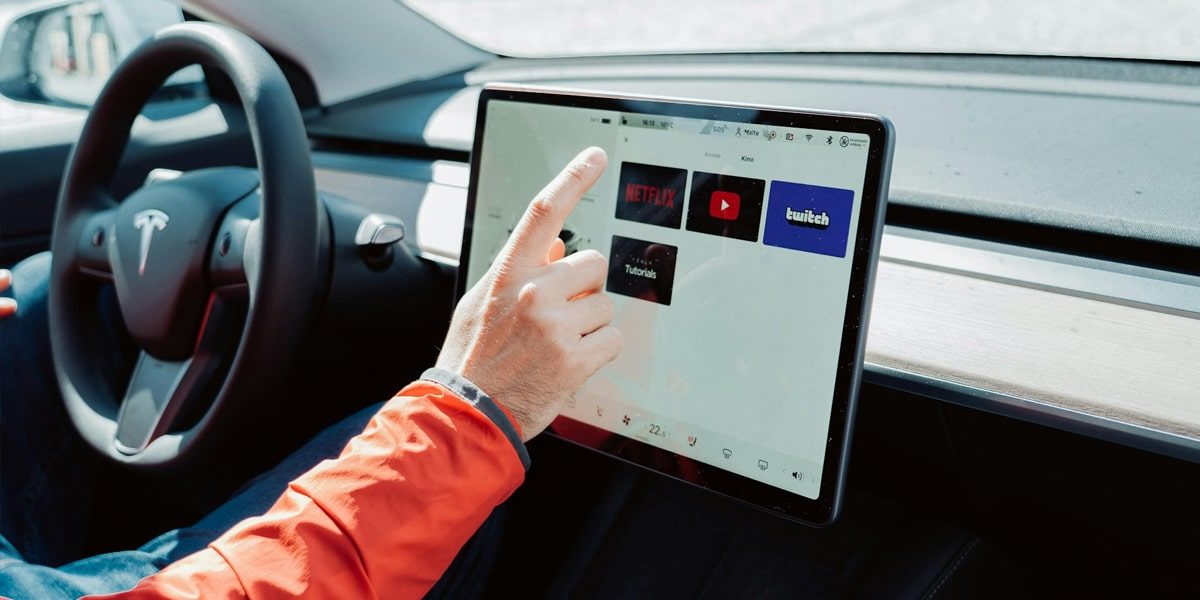In a time when technology and connectivity are critical, the integration of smartphones with in-car entertainment systems has transformed the driving experience. This collaboration has not only improved vehicle functionality but also added a new level of enjoyment and convenience for both car owners and smartphone aficionados.
The Advent of Smartphone-Enabled In-Car Entertainment
The journey into the world of in-car entertainment began with basic radio systems and has evolved into sophisticated, multi-functional experiences. Today, the focus is on connectivity and interactive features, with smartphones playing a pivotal role. When you visit Manheim auto auctions, you can notice a surge in interest for vehicles equipped with advanced entertainment systems, indicating a shift in consumer preferences towards tech-savvy cars.
Smartphone Integration Systems
Key players in the automotive and technology industries have created platforms such as Apple CarPlay and Android Auto, which enable drivers to link their smartphones to their vehicle’s entertainment system. This connection allows customers to access a variety of apps, including navigation, music, phone calls, and messaging, all via the car’s display or voice commands, resulting in a safer driving experience.
This integration is further enhanced by the incorporation of advanced driver-assistance systems (ADAS) that take advantage of smartphone connectivity. By synchronizing with the vehicle’s sensors and cameras, these systems can deliver important feedback and alerts on the car’s display, improving driver awareness and safety. For example, some apps may reflect real-time vehicle diagnostics and performance indicators straight onto the infotainment screen, allowing drivers to keep track of their vehicle’s health and economy while driving. This seamless integration of entertainment, connectivity, and safety functions demonstrates smartphones’ tremendous impact on modern driving experiences, making them an essential component of the automotive ecosystem.
Music and Audio Streaming
One of the most common options is music streaming. Spotify, Apple Music, and Amazon Music may be effortlessly integrated, providing access to massive libraries of songs, podcasts, and audiobooks. This has transformed the way we listen to music in our automobiles, providing personalized playlists and recommendations based on individual preferences.
Furthermore, this integration improves the in-car audio experience by allowing for high-quality, continuous streaming even during long rides. These apps’ advanced algorithms not only customize music selections to individual preferences but also react to various driving conditions, such as providing lively playlists for a road trip or relaxing sounds for heavy traffic.
Navigation and Travel Convenience
Gone are the days of large, standalone GPS systems. Smartphones, via programs such as Google Maps and Waze, offer real-time traffic information, route ideas, and even parking assistance. This integration makes trip preparation more effective and less stressful, particularly in unknown territory.
This innovative navigation system also includes user-generated material and crowd-sourced data, resulting in a dynamic and interactive travel experience. Drivers can receive real-time notifications regarding road closures, accidents, and speed traps sent by other users, assuring the most up-to-date and complete travel information. Furthermore, the integration of location-based services allows for personalized recommendations for nearby restaurants, gas stations, and tourist attractions depending on the driver’s tastes and current itinerary. This level of personalization and real-time engagement elevates the navigation system from a simple directing tool to a holistic travel companion, improving the overall journey with useful insights and ease.
Voice-Activated Controls
Voice recognition technology has greatly improved, allowing drivers to manage a variety of operations without taking their hands off the wheel. Voice commands have made multitasking easier and safer by allowing you to make calls, send texts, and establish routes.
This advancement in voice technology also includes more subtle interactions, such as dictating messages or performing web searches. Sophisticated voice assistants included in the automobile system can interpret normal language, allowing drivers to engage more naturally and efficiently. They may use basic voice commands to ask inquiries, set reminders, and even control their car’s climate and entertainment systems. This level of connection results in a more personalized and interesting driving experience, allowing the driver to stay connected and productive without compromising safety or convenience. The ongoing growth of voice-activated controls is progressively transforming the car into a mobile office or personal assistant, blurring the distinction between home, work, and travel contexts.
In-Car Wi-Fi and Hotspot Solutions
Many modern automobiles include built-in Wi-Fi, which allows passengers to connect their smartphones and other devices to the Internet. This is especially useful on long flights, where travelers can watch movies, play online games, or work remotely.
The availability of in-car Wi-Fi also creates chances for increased vehicle usefulness. For example, real-time software upgrades can be downloaded and installed to keep the car’s systems up to date with the most recent features and security patches. This connectivity also enables cloud-based services such as vehicle tracking and remote diagnostics, which give automobile owners peace of mind. For families, the option to connect many devices at once means that entertainment and work may coexist peacefully during journeys, according to each passenger’s demands. Furthermore, this capability becomes an essential tool for business workers who require a consistent, dependable internet connection, changing the vehicle into a mobile office space where critical virtual meetings or urgent tasks can be completed swiftly, even while on the go.
App Customization and Personalization
Users can customize their in-car experience by downloading and using a variety of applications. The options for finding the nearest gas station, arranging a parking spot, or remotely operating car features are unlimited.
Safety and Diagnostic Apps
Smartphone integration also includes safety and diagnostics. Apps can provide real-time information on vehicle health, schedule maintenance, and even notify emergency services in the event of an accident.
Aside from these functions, some apps provide additional capabilities such as telemetry and driving behavior analysis. These programs can monitor and record driving patterns, offering information on habits such as acceleration, braking, and cornering. This information can be used for a variety of purposes, including enhancing driving abilities and lowering fuel use. In terms of family safety, parents can monitor their children’s driving behaviors to ensure their safety and peace of mind. The Future of In-Car Entertainment
Looking ahead, the combination of mobile phones and in-car entertainment is likely to become more immersive. Some of the upcoming developments include augmented reality (AR) navigation, AI-based personal assistants, and even gesture controls.
Shortly, virtual reality (VR) has enormous potential to join this suite of technologies. Consider a situation in which passengers, particularly in self-driving cars, can wear VR headsets to enjoy immersive movies, games, or virtual travel experiences, transforming the vehicle’s interior into a dynamic entertainment hub. This could transform the concept of road trips, particularly for longer travels, by providing an entertaining retreat for passengers.
Summary
The convergence of smartphones and in-car entertainment systems has not only enhanced the driving experience but also brought a level of convenience and safety previously unimaginable. As technology continues to evolve, we can expect even more innovative features that will make our journeys more enjoyable and efficient.
Published by: Martin De Juan

















